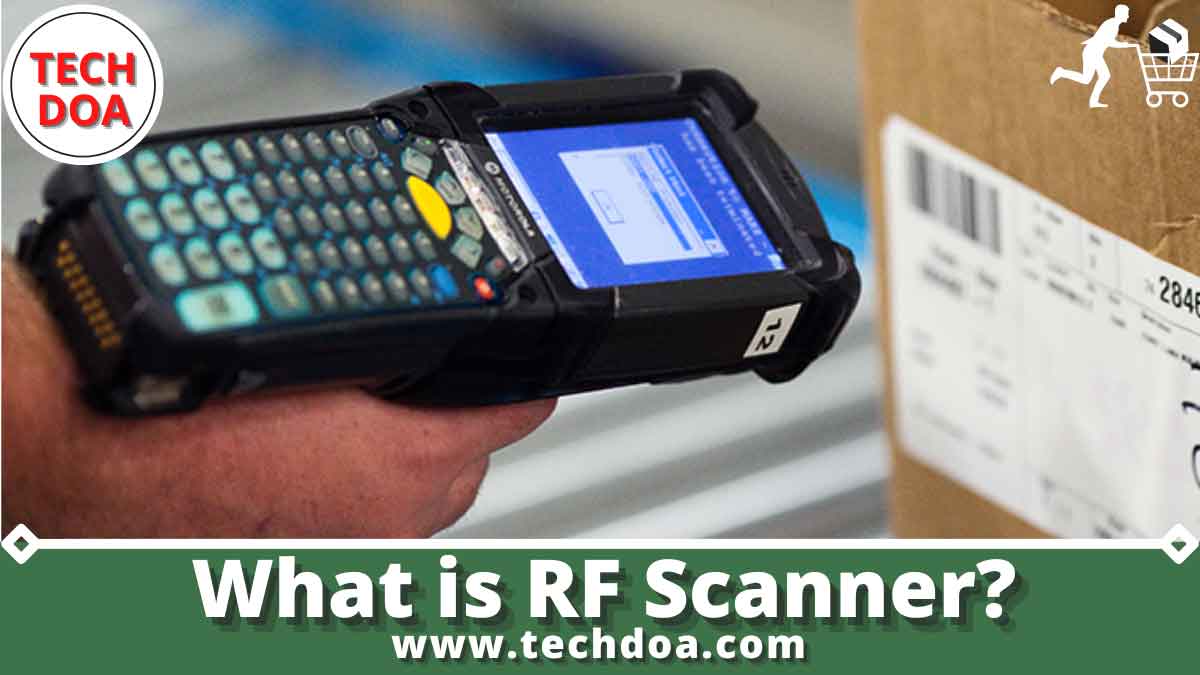An RF scanner is a handheld device that uses radio waves to communicate with a computer or other electronic devices. It is used to input data into a computer or other electronic devices. RF scanners are used in many different industries, such as retail, healthcare, and manufacturing. A radio frequency scanner is a type of radio receiver that can scan multiple frequencies looking for signals. This makes them useful for finding hidden microphones or other devices that might be broadcasting without your knowledge. They can also be used to find weak spots in your home security system or to eavesdrop on conversations. In this article we will discuss all about what is RF scanner and how does it works.
What is RF Scanner?
An RF scanner is a device that uses radio waves to communicate with a computer or other devices. There are two main types of RF scanners: barcode scanners and RFID scanners. Barcode scanners are the most common type of RF scanner, and they are used in many retail environments to scan product barcodes. RFID scanners are less common, but they have some advantages over barcode scanners.
RFID stands for “radio-frequency identification” and it refers to the technology that is used to communicate between an RFID tag and an RFID reader. An RFID tag is a small chip that contains information about the item it is attached to. The information on the tag can be read by an RFID reader, which then sends the information to a computer.
Introduction to the RF Scanner
RF Scanner How It Works?
An RFID scanner is a device used to read and capture information from RFID tags. RFID tags are found in many items, including but not limited to: passports, credit cards, library books, and store merchandise. The data on an RFID tag can be read by an RFID scanner without the need for line of sight or physical contact between the scanner and the tag.
RFID scanners come in two main types: handheld and fixed. Handheld scanners are small enough to be held in one hand, while fixed scanners are larger devices that must be mounted in a specific location. Both handheld and fixed scanners can be used to read data from passive or active RFID tags.
Passive tags do not have their own power source and must rely on the energy emitted by the scanner in order to transmit their data. Active tags have their own power source (usually a battery) and can transmit their data over greater distances than passive tags. RFID scanning systems typically consist of three components: an antenna, a transceiver with decoder, and a controller.
The antenna emits radio waves that activate the tag and enable it to send its data to the transceiver. The transceiver decodes the data received from the tag and sends it to the controller which processes it according to pre-determined rules or instructions. There are numerous benefits associated with using RFID technology.
For example, because RFID tags can be read without line of sight or physical contact, they offer a quick and efficient way to track inventory levels or identify missing items. Additionally, because each tag has a unique identifier, information about specific items can be easily accessed simply by scanning the tag – no barcodes or other labels need to be consulted. This makes RFID ideal for use in supply chain management applications where time is of the essence (such as when tracking perishable goods).
Learn More:
- How to Connect iPad to Printer With USB Cable? (Best Complete Tutorial)
- How Can I Print Documents at Walgreens? Best Guide
What is RF Scanner Used For?
A radio frequency (RF) scanner is a handheld device that uses radio waves to scan for and identify objects. RF scanners are used in a variety of settings, including security, retail, inventory management, and healthcare. Security: RF scanners can be used to detect weapons and explosives hidden under clothing.
They are often used at airports and other secure facilities. Retail: In retail settings, RF scanners are used to track inventory and prevent shoplifting. Inventory management systems use RFID tags to track goods, and RF scanners are used to read these tags. Shoplifting prevention systems use RF scanners to detect items that have not been properly paid for as they leave the store.
Healthcare: Healthcare facilities use RFID tags to track patients, staff, equipment, and medications. This helps ensure that patients receive the correct treatments and helps staff keep track of medications and other supplies.
What Does RF Stand For Scanner?
RF stands for Radio Frequency. A scanner is a device that can scan frequencies in the RF range and receive the signal.
How Do You Use a RF Gun Scanner?
RF gun scanners are becoming increasingly popular in retail settings as a way to deter theft and increase security. Here’s how they work: When an item is scanned with an RF gun scanner, a unique code is generated and sent to the store’s security system. This code can be used to track the item if it is stolen or misplaced. If an item is stolen, the store’s security team can use the code to quickly locate the item and apprehend the thief.
Additionally, stores can use data from RF gun scanners to identify patterns of theft and take steps to prevent future incidents. Overall, RF gun scanners are a valuable tool for retailers who want to improve security and decrease shrinkage (theft).
What is RF Scanning in Warehouse
RF scanning is a common warehouse technology that uses handheld devices to track inventory and product movement. This system can be used to scan barcodes on products, pallets, or locations in order to track inventory levels and movements. RF scanning can also be used to perform other tasks such as picking orders or checking in shipments.
What Does RF Stand for in Warehousing?
RF stands for radio frequency. RF is a type of electromagnetic radiation with a frequency range from 3 kHz to 300 GHz. The term “radio” encompasses a wide variety of activities, including two-way voice communication, data transmission, and broadcasting. In warehousing, RF refers to the use of radio waves to automatically identify and track inventory as it moves in and out of the facility.
Conclusion
An RF scanner is a type of barcode scanner that uses radio waves to communicate with barcodes. Unlike traditional laser scanners, RF scanners do not require line of sight to read a barcode. This makes them ideal for scanning items in difficult-to-reach places or for scanning items that are moving. I think you are now clear about what is RF scanner.

Senior Editor at Techdoa.com. With a great experience after using multiple printers, I review best printers with proper guideline. I hope my provided information will inspire you to choose the best printer for your personal or professional work.
